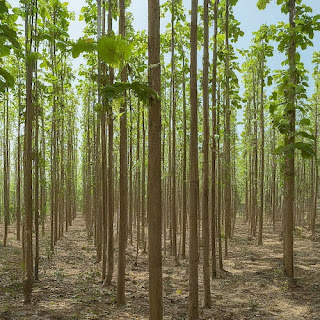A Green Future for Myanmar's Teak Industry
Vertical Teak Forests: A Green Future for Myanmar's Teak Industry
Myanmar boasts a rich legacy intertwined with teak, a prized wood known for its strength and beauty. However, traditional logging practices have threatened the sustainability of these precious forests. Vertical Teak Forests, a revolutionary concept, offer a glimmer of hope. These modular, vertical structures promise to cultivate teak in a controlled environment, providing a sustainable and eco-friendly alternative for the future.
What Needs to be Done:
- Research and Development: Extensive research is crucial to identify and cultivate fast-growing teak varieties that thrive in these vertical structures. Additionally, optimising irrigation and nutrient delivery systems specifically for vertical teak growth is essential.
- Modular Design and Construction: Develop modular, stackable structures made from recycled materials to create efficient vertical forests. This minimises the environmental footprint and allows for flexible expansion based on demand.
- Integration with Renewable Energy: Power the vertical forests using renewable energy sources like solar panels. This ensures environmentally responsible practices throughout the entire teak production process.
Future Environmental Benefits:
- Reduced Deforestation: Vertical Teak Forests significantly reduce pressure on natural teak forests, allowing them to recover from past logging practices. This promotes a healthier and more biodiverse environment.
- Increased Sustainability: By cultivating teak in a controlled environment, resources like water and fertiliser can be utilised more efficiently, minimising environmental impact.
- Enhanced Carbon Sequestration: Vertical Teak Forests act as carbon sinks, absorbing carbon dioxide from the atmosphere and contributing to the fight against climate change.
DIY and Tips for Success:
- DIY Micro-Vertical Teak Garden: Construct a small, vertical container garden using recycled materials and plant fast-growing teak seedlings (available online or at specialised nurseries). This allows for hands-on learning about teak cultivation and the potential of vertical gardening.
- Community Outreach Programs: Organise educational programs to inform local communities about the benefits of Vertical Teak Forests and encourage participation in responsible teak production methods.
- Invest in Research and Development: Support organisations and initiatives dedicated to researching and developing Vertical Teak Forest technology. This can be done through individual donations or volunteering efforts.
Overcoming Challenges:
- Initial Investment Costs: Developing and implementing Vertical Teak Forest technology requires significant initial investment. Public-private partnerships and government incentives can help mitigate these costs.
- Optimising Growth Conditions: Fine-tuning the environmental conditions within the vertical structures to ensure optimal teak growth requires ongoing research and monitoring.
- Market Acceptance: Educating consumers about the benefits of sustainably-sourced teak from Vertical Teak Forests is crucial to ensure market acceptance and long-term success.
A Flourishing Vision:
Vertical Teak Forests offer a transformative approach to Myanmar's teak industry. By embracing this innovative technology, Myanmar can ensure a sustainable future for its teak production while safeguarding its precious natural forests. Through research, community engagement, and commitment to overcoming challenges, Vertical Teak Forests can become a reality, enriching Myanmar's environment and economy for generations to come.



